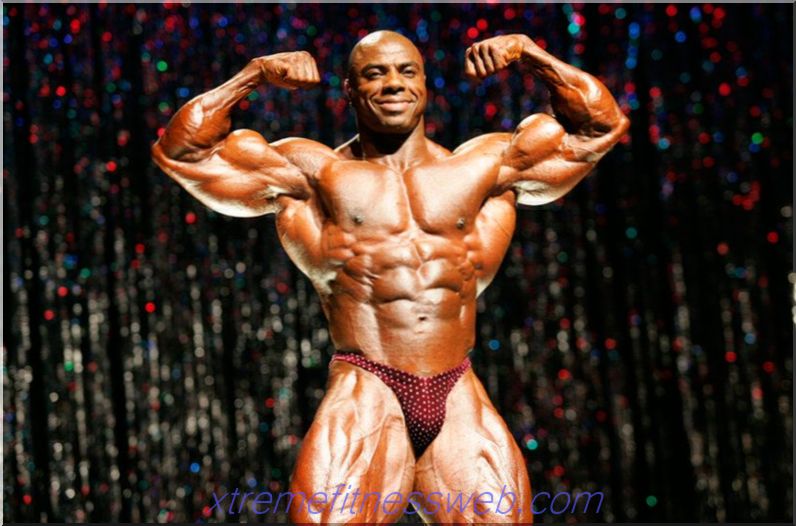
Many beginning athletes, following the advice of more "experienced" bodybuilders or doing strength training exclusively at their own discretion, make many trivial mistakes. This, unfortunately, applies not only to beginners, but also to bodybuilders who visit the gym for a long time. Many simply do not take into account the fundamental principles, which leads to a significant decrease in the pace of progress in building a relief, inflated body. If an athlete who does not take sports pharmaceuticals does not understand the basics, mistakes will be repeated again and again.
Content
- 1 Principles of training for the straight
- 1.1 You can not follow the advice of "chemists"
- 1.2 Avoid overtraining
- 1.3 Do not neglect the rest between workouts
- 1.4 Do not forget about the rest between sets
- 2 Conclusion
Principles of training for the straight
The training process without taking chemistry is based on four basic principles. They should all be a priority for the “natural” athlete. Any deviation or exclusion leads to a sharp decrease in the effectiveness of the training, the absence of significant progress over a long time. If each principle is followed and taken into account, it becomes absolutely clear how and how much you need to train and recover so as not to slow down and not feel overtrained, to remain satisfied with the results.
You can not listen to the advice of "chemists"
It is necessary to clearly distinguish the ways of building muscles between straights and bodybuilders accepting chemistry. The muscle mass of the latter is mostly the result of oral and injectable steroids. Listening to a trainer or more experienced gym companions who use anabolics makes no sense.
If you go from the opposite, swinging for several hours a day and doing an incredibly huge number of approaches in each exercise, but not taking chemistry, none of this good will work. A wrong role model can be not only the trainer and regulars of the gym, but also professional bodybuilders who tell and show their unique techniques in books and video materials.
The pros not only went through the difficult path of training, but also adhere to a special diet, and steroids are taken under the strictest supervision of specialists. And if, for example, you begin to engage in a revolutionary program from Greg Plitt, it is impossible to hold out for more than a week without pharmaceutical support. Particularly stubborn, of course, can force themselves to do it by force, believing that in this way they will also become professionals.
There are athletes who are convinced that you need to exercise in the gym five to six times a week, also doing morning cardio. Some do three exercises with 15-20 repetitions on any one muscle group. You can master this with chemistry, but such an approach is definitely not for the straight.
The optimal time for classes is an hour of active training with iron, but no more.
Avoid overtraining

Heavy developmental training, according to the results of studies, should be performed no more than twice a week. Not four or six times, but only two. The rest of the time can be devoted to the muscles that are left unattended by doing light isolating exercises. Cardiotraining does not have a strong effect on the endocrine system; it can be performed without strict restrictions.
If a week is dedicated to heavy training from three or more times, the onset of the training plateau, when due to overtraining the athlete’s motivation and desire to continue to do more, will happen. A well-designed lesson plan allows you to avoid this, enough time to restore the endocrine and nervous system, muscle tissue. This will allow you to continue to feel a great desire and desire for further training.
Do not neglect the rest between workouts
Muscle fibers are restored to 95% only 10-15 days after exercise. It’s wrong to train the same muscle group twice or thrice a week. This negatively affects the muscle structure that has not yet had time to strengthen and build. Much more productive and efficient workouts performed once every 14 days. A more frequent load provokes the onset of the catabolism process, when the muscles do not increase in volume, but begin to collapse under constant pressure of heavy weight, as they simply do not have time to “rest” to form and provide growth.
This does not mean that you need to visit the gym only once every two weeks. It is enough to alternate a week of heavy training with a large weight and a week of light pumping. Do not take pumping lightly. Properly selected exercises, performed during the week of "rest" from heavy iron, make it possible to work out the so-called slow muscle fibers, which are difficult to pump during heavy training. Such an alternation approach guarantees the proportional development of muscles, minimizes the possibility of catabolism - the breakdown of muscle cells.
Do not forget about the rest between sets

The pause between sets depends on the type of training. In many sources, it is recommended to rest from 1 to 2 minutes for those who are gaining weight, and 2-8 minutes for athletes working to increase strength. Recovery of oxidized muscles during heavy training takes at least 5 or 10 minutes.
During this period of time, lactic acid manages to be almost completely processed, and Kreotinfosfat - the main source of energy required for muscle tissue to recover. Providing good muscle relaxation, the athlete can again begin to perform a powerful approach with heavy weight.
Conclusion
A straight athlete who clearly follows these four principles will avoid many mistakes and will be able to properly build his training program.







